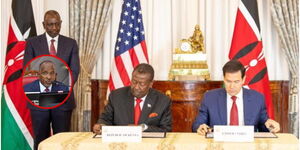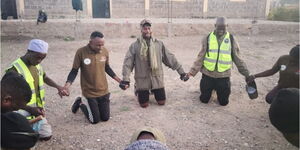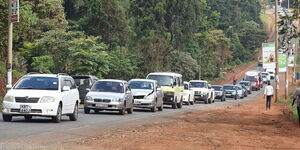The American Embassy releases regular updates on advisories to its citizens recommending for or against travel to countries, and with reason.
On October 4, the Embassy issued its latest advisory to Kenya - a Level Two - asking its citizens to exercise extra caution when travelling to the country.
America issues four types of advisories categorised from Levels 1 - 4, with the associated risks increasing with each level.
"We issue an overall Travel Advisory level for a country, but levels of advice may vary for specific locations or areas within a country," the US Department of State denotes.
The Level 1 Advisory is known as the 'Exercise Normal Caution' level. At this level, American citizens are exposed to the fewest amount of risks and may be tipped off on what actions to take in the face of danger.
A Level 2 advisory demands that citizen exercise increased caution. This means that the US government has established travel to the earmarked countries will expose citizens to heightened risks to safety and security.
Consequently, the consulate provides regular updates on the state of security as conditions in any country may change at any time.
Level 3: Avoid travel - urges citizens not to travel to the host nation unless it is deemed necessary due to serious risks to safety and security. The Department of State provides additional advice for travellers in these areas.
Notably, the highest advice against travel is Level 4: Do Not Travel, and is issued when the risks involved are life-threatening.
"The Department of State advises that U.S. citizens not travel to the country or to leave as soon as it is safe to do soand provides additional advice for travelers in these areas in the Travel Advisory," the international travel guide explained.
The advisories are denoted using blue, cream, amber and red, respectively. They are also accompanied by letters to explain the associated risks as follows:
C – Crime: Widespread violent or organized crime is rampant and present in areas of the country, and law enforcement agencies have limited ability to respond to serious crimes.
T – Terrorism: Terrorism threats and, or attacks have occurred against civilians, groups, or other targets.
U – Civil Unrest: Political, economic, religious, or ethnic instability exists and may cause violence, major disruptions or safety risks.
H – Health: The issuance of a notice by the Centers for Disease Control (CDC) against a disease, health risks, including current disease outbreaks or a crisis that disrupts a country’s medical infrastructure, are present.
N - Natural Disaster: A natural disaster, or its aftermath, poses a danger.
E - Time-limited Event: Short-term events, such as elections, sporting events, or other incidents that may pose safety risks.
K – Kidnapping or Hostage Taking: Criminal or terrorist individuals or groups have threatened to and/or have seized or detained and threatened to kill, injure or continue to detain individuals to compel a third party (including a governmental organization) to do or abstain from doing something as a condition of release.
D – Wrongful Detention: The risk of wrongful detention of U.S. nationals by a foreign government exists.
O – Other: Potential risks are not covered by previous risk indicators. Read the country’s Travel Advisory for details.












